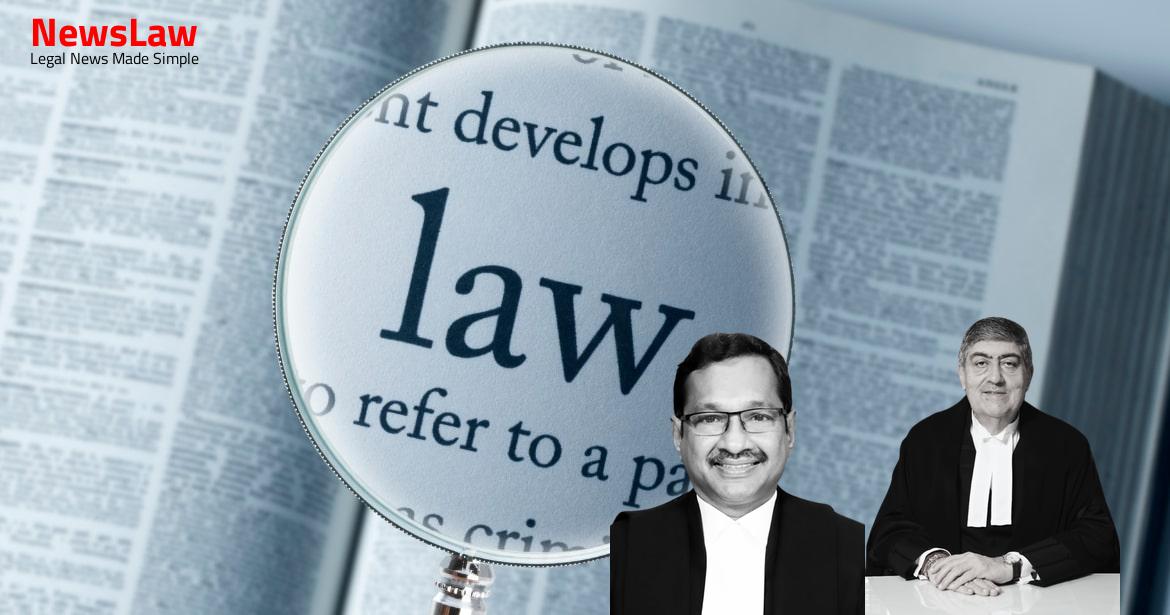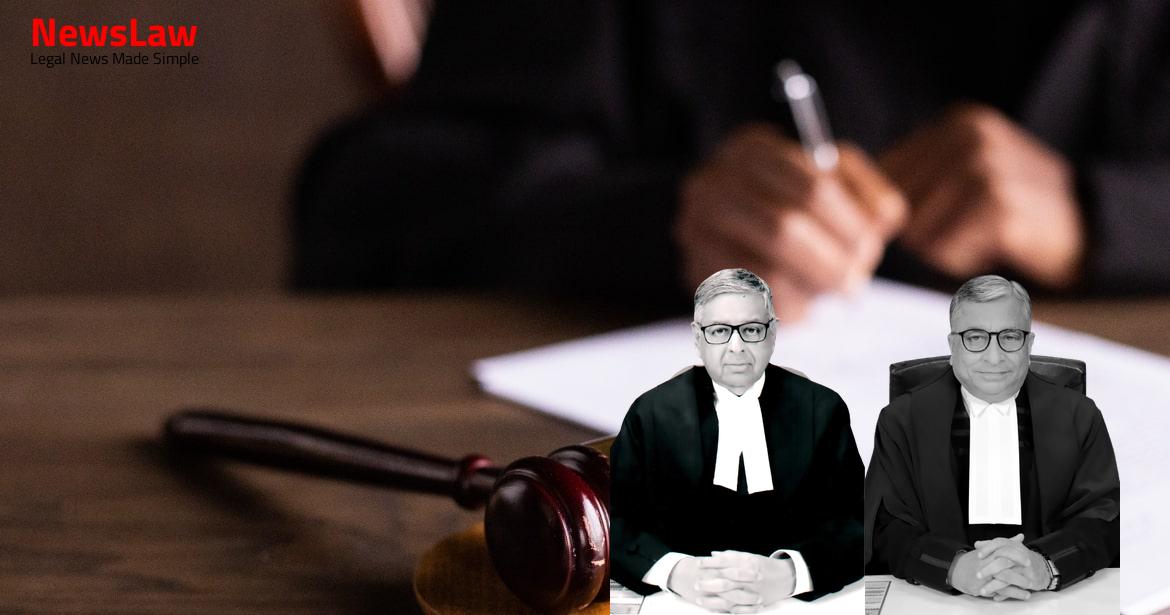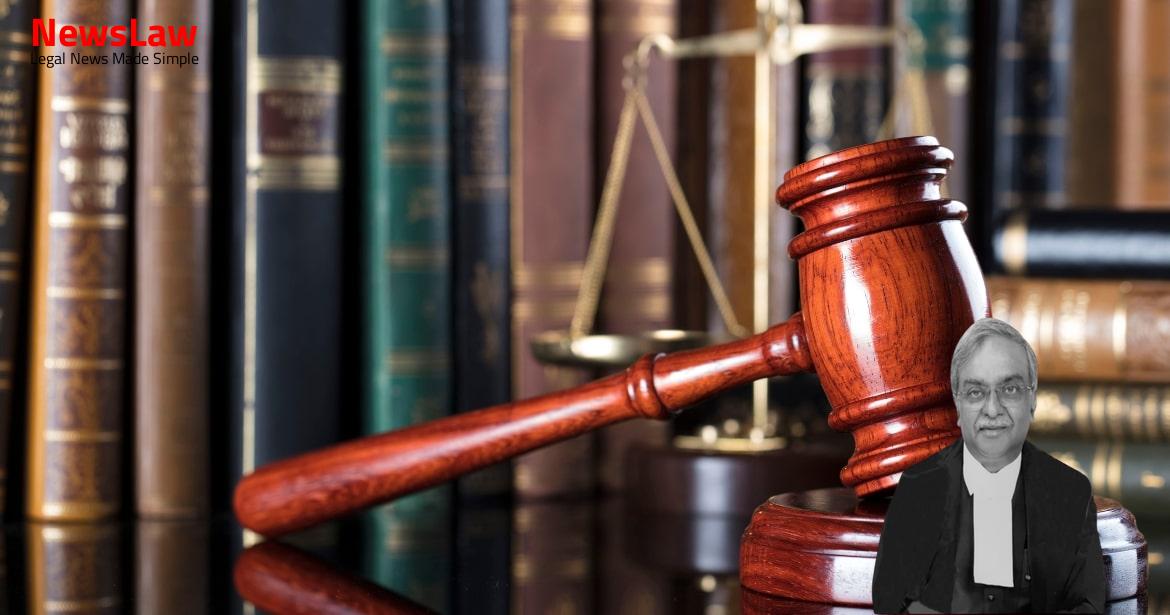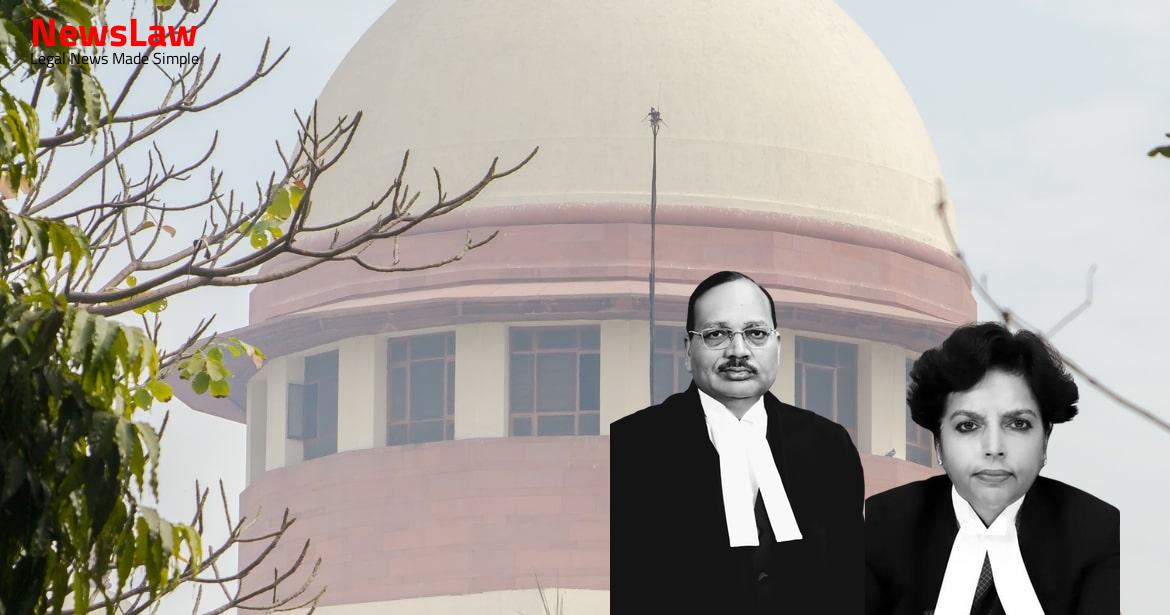Delve into the detailed legal examination conducted by the court in a recent case involving a land dispute and violent attack. The court’s analysis of the evidence, burden of proof, and application of legal principles emphasizes the importance of a fair and comprehensive investigation process in criminal cases. Follow along for insights into the complexities of the legal system and the nuances of criminal justice.
Facts
- The dispute between Surjaram and the deceased arose over a pathway which led to the violent attack on the victims with various weapons.
- The occurrence involved a total of 25 accused who attacked the deceased and witnesses while they were sleeping in their courtyard.
- The assault included the use of weapons such as farsi, barchi, lathi, bhala, and swords.
- Witnesses, including a physically challenged individual, gave testimonies about the attack from a close distance.
- A written complaint was lodged by one of the witnesses the day after the incident, leading to the FIR being registered.
- The investigation involved multiple witnesses, medical examinations of the injured accused, and arrests made by the police.
- The case went through multiple trials, with additional accused being added in the second trial.
- Several appeals were filed by different parties, including the convicted individuals and the de facto complainant.
- Numerous injuries with specific dimensions were reported on the victims, and medical examinations played a crucial role in the case.
- The lands and pathways surrounding the dispute were central to the conflict between Surjaram and the deceased.
- Remaining five accused acquitted in trial court
- High Court acquitted one more accused on appeal
- High Court confirmed conviction of four accused
- Life sentence imposed on four convicted accused
- High Court dismissed appeals against acquittal and allowed appeals by convicted accused
Also Read: Supreme Court Judgment on Single Till Mechanism for HRAB Calculation: A Comprehensive Analysis
Analysis
- The evidence adduced on behalf of the prosecution, particularly the eyewitnesses do not inspire confidence.
- The medical evidence is contrary to the ocular evidence with respect to the injuries suffered.
- A higher degree of onus is required to be put on the prosecution to prove that a person charged with an offense is liable to be punished for the offence committed by others under section 149 IPC.
- The overt act attributed to the convicted accused using weapons such as farsi do not correspond to the injuries.
- No independent witness was available during the investigation and also before the court.
- Deliberate denials by witnesses during questioning, including the authorship of the written complaint.
- A deeming fiction is created to apply private defence to all involved due to a common objective to commit an offense.
- Clear distinction in the Code on knowledge and intention.
- The High Court was criticized for not considering the plea of self-defence for accused persons who did not specifically mention it in their statements under Section 313 CrPC.
- A higher standard of evidence required for invoking Section 149 IPC.
- The non-mentioning of the FIR number in the injury reports raised doubts of potential antedating of the FIR.
- Findings regarding discrepancies in evidence, suppression of facts, and lack of credibility of witnesses.
- The need for a fair investigation and rejection of evidence that lacks credibility.
- Challenges regarding the burden of proof and the concept of private defence in criminal cases.
- Concerns raised about the fairness and neutrality of the investigation process.
- Issues related to discrepancies in witness testimony, motives, and the significance of reliable evidence in criminal cases.
- Analysis highlighting the shortcomings in the investigation process and the importance of verifying evidence for a just outcome.
- Reiteration of the need for a comprehensive and unbiased investigation process in criminal cases.
- Section 149 of the Indian Penal Code (IPC) deals with a common object and requires evidence of an assembly with a common object becoming unlawful.
- An accused cannot be compelled to be examined as a witness, and no adverse inference can be drawn against the defense for abstaining from the witness box.
- The prosecution must establish that a particular accused had done some overt act to prove membership in an unlawful assembly.
- Several judgments and principles are cited to emphasize the importance of fair investigation, including the need to explain injuries sustained by the accused during the occurrence.
- Failure to investigate certain aspects or conduct a fair investigation can cast doubts on the prosecution’s case and benefit the accused.
- The prosecution must stand or fall on its own evidence, and doubts raised by the defense can impact the overall case.
- Cases involving multiple injuries, land disputes, and civil suits may require a careful examination of the evidence to avoid miscarriage of justice.
- Under Section 102, the right of private defence continues as long as there is an apprehension of danger to the body
- If the apprehension of danger has ceased and the attacker continues, the right of private defence is exceeded
- Section 101 allows for causing harm other than death to the assailant, unless Section 99 applies
- Section 97 grants the right to defend one’s own body or the body of another against any offence affecting the human body
- Nothing is considered an offence if it is done in exercise of the right of private defence, as per Section 96
- The right of private defence can include causing death if the assault reasonably causes an apprehension of death or grievous hurt, under Section 100
- Section 99 restricts the right of private defence to inflicting only as much harm as necessary for defence
- The evidence adduced is not separable and the common findings rendered shall be made applicable to all the accused.
- There are too many loopholes that cannot be filled up, nor is there any evidence to come to a different conclusion including that of exceeding the right of private defence.
- The acquittal by the High Court, not challenged qua the first trial, would give the benefit to the similarly placed accused whose acquittal was challenged in the second trial.
- The convictions rendered are to be interfered with in the light of the discussions made.
- The second trial does not make the case of the prosecution any better.
- A civil dispute between two groups of villagers turned into a criminal case.
Decision
- Accused-Appellants entitled to benefit of doubt
- Private defence plea supported with evidence
- Accused appeals allowed, complainant appeals dismissed
Also Read: Selection and Appointment of Judicial Officers in Himachal Pradesh
Case Title: ARVIND KUMAR @ NEMICHAND . Vs. THE STATE OF RAJASTHAN (2021 INSC 764)
Case Number: Crl.A. No.-000753-000753 / 2017



